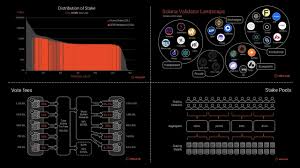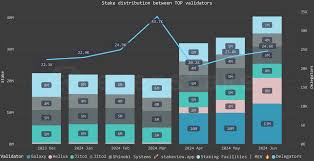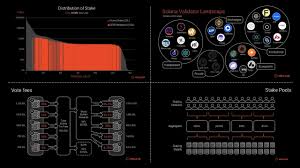
Staking SOL natively has become one of the hottest ways to earn passive income in the Solana ecosystem, and 2025 is shaping up to be a golden era for smart stakers. If you’ve ever wondered how to stake SOL for double-digit yields without leaving the safety of your own wallet, let’s dive into how Solayer Labs makes it refreshingly simple. With their hardware-accelerated SVM and a streamlined interface, Solayer Labs is quickly gaining traction as a go-to platform for users looking to maximize their SOL staking yield—with some users reporting up to 12% APY through native staking.

Why Native SOL Staking Is Gaining Momentum
The crypto community is buzzing about native SOL staking—and for good reason. Unlike liquid staking tokens or custodial solutions, native staking means your SOL never leaves your wallet; instead, it’s delegated directly to validators on the network. This approach offers unparalleled security and transparency, but also requires a bit more involvement from the user (think warm-up and cool-down periods). Still, with yields like those offered by Solayer Labs, the minor inconvenience is more than worth it.
Let’s break down why native staking is attracting so many new participants in 2025:
Top 5 Reasons to Choose Native SOL Staking
-

Maximum Security: Native SOL staking keeps your assets on-chain and under your control, reducing risks from hacks or third-party failures.
-

Higher Yields: By staking directly, you often receive full validator rewards—no middleman fees or profit-sharing, maximizing your earning potential.
-

True Decentralization: Supporting the Solana network directly helps decentralize and secure the blockchain, empowering the entire ecosystem.
-

Transparency & Control: With native staking, you can track your rewards and manage your stake anytime, with full visibility into validator performance.
-

No Counterparty Risk: Unlike centralized platforms, native staking means no reliance on third parties—your SOL stays in your wallet and under your ownership.
The rise of platforms like Solayer Labs isn’t just about higher yields—it’s about giving users more control over their assets while supporting network decentralization. And with Solana’s blazing-fast transaction speeds, managing your stake is smoother than ever.
Step-by-Step Guide: How to Stake SOL Natively with Solayer Labs
If you’re ready to put your idle SOL to work, here’s a quick overview before we get granular:
- Connect your wallet: Head over to Solayer Labs’ dApp.
- Select sSOL: In the interface, navigate to the sSOL section (that’s Solayer’s staked SOL token).
- Access Native Staking: Click on “Native Staking” in the top right corner.
- Choose amount & validator: Enter how much SOL you want to stake and select your preferred validator (or let Solayer auto-select for optimal rewards).
- Confirm & stake: Approve the transaction in your wallet—done!
The process takes less than five minutes if you already have some SOL in your wallet. You’ll see current exchange rates (e.g., 1 sSOL = 1.0684 SOL) and can track rewards directly through the dashboard. The best part? Your funds remain non-custodial throughout—you’re always in control.
Earning Potential: Is 12% APY Sustainable?
The promise of a 12% yield on staked SOL has turned heads across Crypto Twitter and Reddit alike. But what drives these returns? It comes down to validator performance, network inflation parameters, and bonus incentives offered by innovative platforms like Solayer Labs.
This isn’t just marketing hype—Solana’s robust validator ecosystem enables competitive rewards while maintaining security. However, it’s important to remember that APYs can fluctuate based on network conditions and overall participation rates. That said, platforms like Solayer are transparent about their reward structures and offer real-time analytics so you can monitor your earnings at any time.
Navigating Warm-Up & Cool-Down Periods
If you’re new to native staking on Solana, be aware that there are brief “warm-up” periods before your stake becomes active—and “cool-down” periods if you decide to unstake. These mechanisms help maintain network stability but require some patience compared to instant liquidity solutions.
If maximizing yield while keeping custody of your assets sounds appealing, then learning how to stake SOL natively with platforms like Solayer Labs is an absolute must for any serious DeFi participant in 2025.










